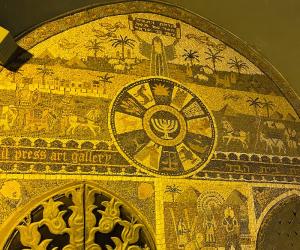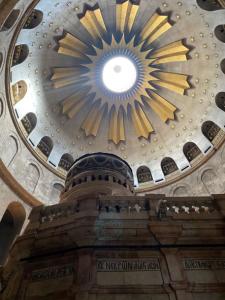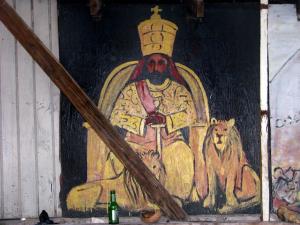In my preceding post, I examined the role of the prophet Moses within the doctrine and literature of the Church of Jesus Christ of Latter-day Saints. As in Judaism, Christianity, and Islam, the Israelite lawgiver maintains a place of lasting prominence among Mormons on account of his reputed heroic deeds and proximity to the transcendent. Therefore, to summarize the LDS perception of Moses rather quite succinctly is to simply echo the following description by Bruce R. McConkie: “In prophetic power, spiritual insight, and leadership qualifications, Moses ranks with the mightiest men who have ever lived.” [i] But Mormonism isn’t the only young Abrahamic faith to highly revere the biblical figure in question, Baháʼís too acknowledge the immensity of Moses.

The second eldest of the three new religious movements being discussed in this series (see Pt. 1 here) sprung forth from Persia three decades after Joseph Smith first published the Book of Mormon. This tradition, known as the Baháʼí faith, affirmed itself as the next authentic religious structure to drink from the fount of God’s progressive revelation following a proclamation by the prophet Baháʼu’lláh in the 1860s.
Manifestations of God
Since the faith’s inception, Baháʼís have promulgated a belief in the unity of religions, suggesting that the founders of all major world faiths had been granted the ability to accurately transmit the will of God at a specific point in time. These Manifestations of God are considered to be more like prophets than that of incarnations, but nevertheless act as “true mirrors of the sanctified Essence of God.”[ii] Among the most influential of the Baháʼí Manifestations are the following: Abraham, Jesus, Muhammad, Buddha, Baháʼu’lláh, and Moses.
Despite some jurisdiction being given to the Hebrew Bible, New Testament, Quran, and other sacred scriptures from around the globe, the Baháʼí faith earnestly advocates Baháʼu’lláh as the appointed Manifestation for this cycle of human history and therefore endorses his writings–along with those from Abdu’l-Bahá, and the Báb–as the most authoritative of inspired texts. As I continue my pursuit of Moses, I will examine two crucial Baháʼí texts, the Kitáb-i-Íqán (Book of Certitude) and Some Answered Questions, in the words below.
Book of Certitiude
When searching for the great Israelite leader in the Baháʼí canon, one needn’t look beyond that of one of the faith’s most fundamental theological volumes, the Book of Certitude. This sacred masterwork optimally outlines much of Baháʼí doctrine–having flowed from the pen of Baháʼu’lláh himself during his exile in Iraq[iii]— and additionally solidifies the significance of the Hebrew lawgiver within the faith.
Speaking much of the Manifestations, the text portrays Moses as a divinely-ordained lamp unto humanity who instructed the hearers of God throughout the duration of his designated dispensation. Baháʼu’lláh revealed the following:
“Armed with the rod of celestial dominion, adorned with the white hand of divine knowledge, and proceeding from the Paran of the love of God, and wielding the serpent of power and everlasting majesty, He shone forth from the Sinai of light upon the world. He summoned all peoples and kindreds of the earth to the kingdom of eternity, and invited them to partake of the fruit of the tree of faithfulness.”[iv]
This excerpt from the Book of Certitude shines a tremendous light on Moshe as he is conceptualized amongst the Baháʼís. Having accepted the holy baton thrust upon him by the glorious Friend of God, Abraham, the great Israelite became the next Divine Manifestation to proclaim the utterances of the Lord to those who dwelled upon the face of the eternal earth. “He Who Held converse with God”[v] overcame opposition from Pharaoh, redeemed a nation, and “gave life to the people of Israel” by establishing celestial “laws and ordinances.”[vi]
Moses fulfilled his task as a Manifestation adroitly and when the hour drew nigh, prepared the way for the next of God’s holy foot soldiers to take the reins of the infinitely sublime task at hand.
Some Answered Questions
As a response to pressing inquiries regarding doctrine and metaphysics, Abdu’l-Bahá, the progeny of Baháʼu’lláh, composed a paramount Baháʼí text entitled: Some Answered Questions. Expounding upon a manifold of religious uncertainties, this inspired scripture explicates the nature of a theme imperative to the unfolding of our discussion: the Divine Manifestations.
Moses is the third prophet to garner a subheading by the author and although much is echoed from the pages of the Kitáb-i-Íqán, several statements unique to Questions can still be observed. Here is one regarding Moshe after he had bestowed wisdom upon the Israelites:
“To such a development did they attain that the philosophers of Greece would come and acquire knowledge from the learned men of Israel. Such an one was Socrates, who visited Syria, and took from the children of Israel the teachings of the Unity of God and of the immortality of the soul. After his return to Greece, he promulgated these teachings.[vii]
According to the Baháʼí faith, the Hebrew lawgiver wasn’t solely a seer, but a divinely-inspired philosopher whose instruction had successfully trickled down to the very likes of Plato and Aristotle– giants of Hellenistic thinking.[viii]
As observed in the pages of his doctrinal work, Abdu’l-Bahá emphasizes Moses’ lowly beginnings and proclaims the beauty of God’s work throughout the prophet’s life. The Baháʼí faith doesn’t suggest that the Israelite’s importance waned outside of the Hebrew encampments; Moses’ reverberations were felt throughout the world. Indeed, Baháʼís declare that it was Moshe’s holy wisdom that spurred nothing less than the beginnings of the intellectual West.
To learn more about the significance that Moses enjoys within the Rastafari movement, check out the next installment!
[i] Bruce R. McConkie, Mormon Doctrine. Salt Lake City: Bookcraft, 1993), 515
[ii] Abdu’l-Bahá, Some Answered Questions, trans. Laura Clifford Barney (Wilmette: Baháʼí Pub., 1981), 147
[iii] Baháʼu’lláh, Book of Certitude, trans. Shoghi Effendi (Wilmette: Baháʼí Pub., 2003), x
[iv] Ibid., 10
[v] Ibid., 58
[vi] Abdu’l-Bahá, Questions, 14
[vii] Ibid., 14
[viii] Ibid., 15












